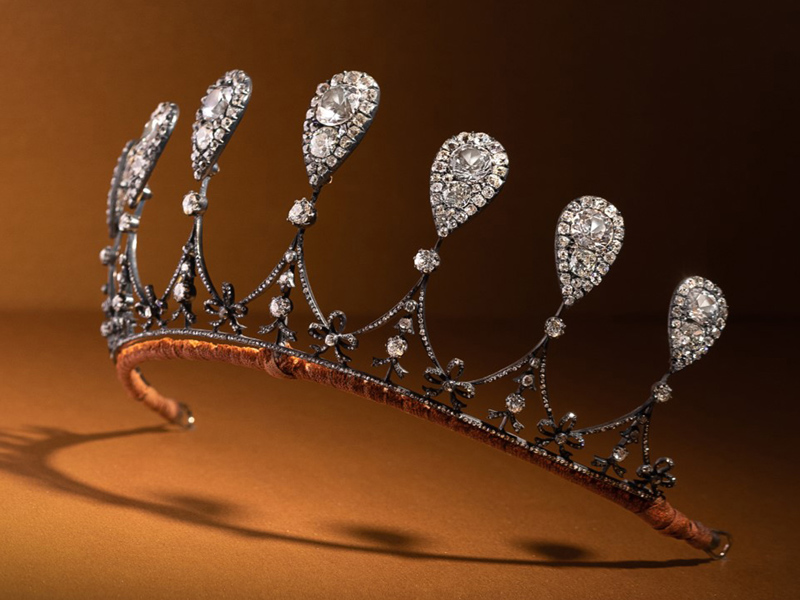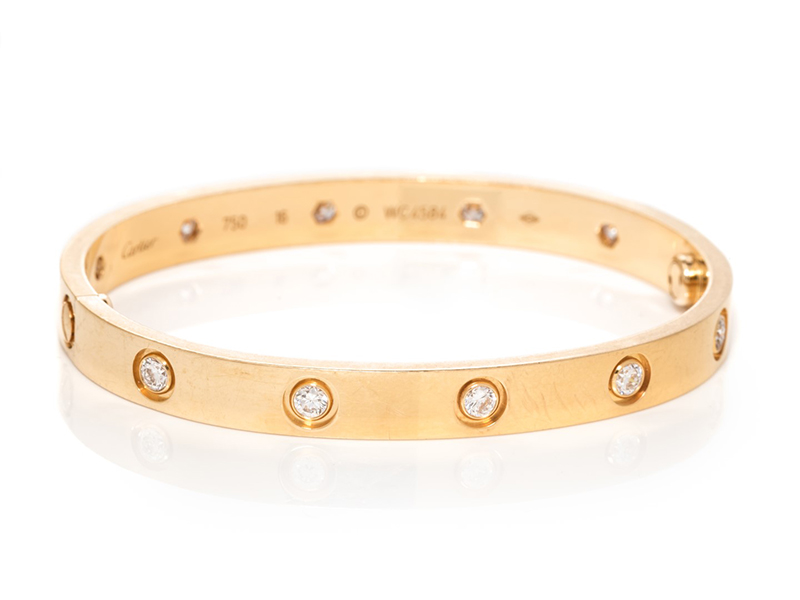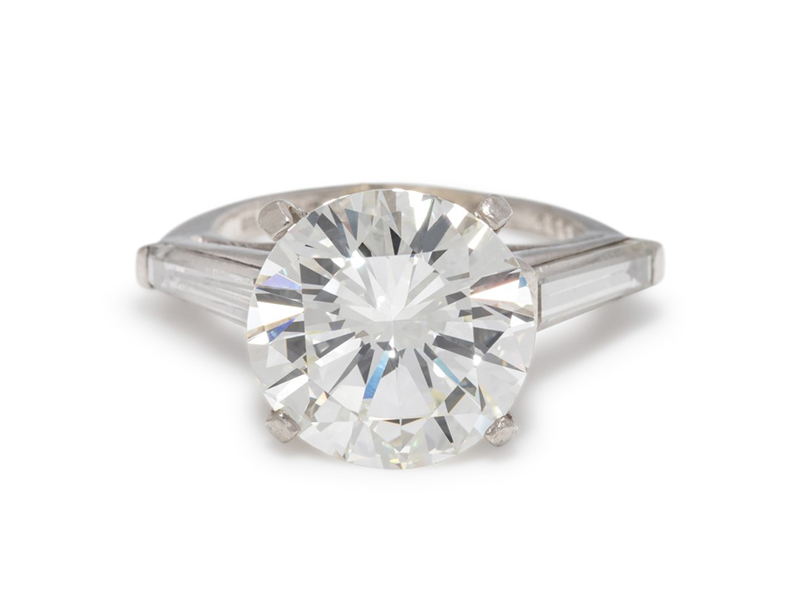Q&A: Jewelry care and appraisal questions, answered
Preserve the sparkle of your favorite pieces with tips from Hindman Auctions’ Katie Guilbault
Many of us own jewelry—pieces for every day, ones for special occasions and perhaps treasured heirlooms. It’s always a pleasure to receive new pieces as well as ponder our next acquisitions. We recently spoke with Katie Guilbault, Senior Jewelry Specialist at Hindman Auctions, for an expert viewpoint from the world of jewelry auctions. Here’s what we learned.
Q. Hindman Auctions hosts around 12 jewelry and timepiece auctions a year. What differentiates an auction house from a retail jeweler?
Katie Guilbault: Auction houses usually sell objects that are secondary market—jewelry pieces that have been pre-owned, yet have resale value due to their design, heritage, rarity and uniqueness. In a sale, Hindman Auctions usually offers pieces that can be everyday wearable, like diamond stud earrings; special occasion pieces such as gemstone rings that can be engagement rings; and heirloom pieces, like vintage Cartier and Bulgari. Our December 2020 sale, for example, even offered a special heirloom—a vintage tiara. It sold for $68,000, multiples over its original estimate of $6,000 – $8,000!
A jewelry enthusiast can come across great values and also rare antique pieces at auctions. In our sales, we usually arrange like pieces together. So if you see an aquamarine ring, the lots around it will also be similar. This allows a collector to acquire more pieces of a particular style they like, but also fall in love with new unexpected objects!
Q: Let’s talk about estimates. Auction estimates often seem to be below retail value—can you explain that?

ANTIQUE, ROYAL DIAMOND TIARA. $6,000-$8,000. Price Realized: $68,750. Image: Courtesy Hindman Auctions.
Katie Guilbault: Yes, the auction estimates are fair market value (FMV). This is the estimated amount that a buyer is willing to pay on any given day. When the auction takes place, client demand determines the ultimate price.
For example, signed jewelry (Tiffany, Van Cleef, etc.) is typically worth more than unsigned jewelry, and there is often more demand for those pieces. Strong demand also alerts the market to trends. For example, it’s probably not a coincidence that the aforementioned tiara sold for such a strong price at a time when the Netflix series “The Crown” has been one of the most watched series of the past year!
Q. So can clients get replacement estimates from an auction house?
Katie Guilbault: People typically bring jewelry to an auction house to sell because of the four Ds: Death, Divorce, Debt or Downsizing. Auction houses can provide a fair market value of what the piece would be expected to fetch at auction, which provides a client the option to decide to keep or sell a particular piece of jewelry.
However, the auction estimate at fair market value is much different than insurance replacement value, or retail replacement value, which is often higher. Retail replacement value is the cost an individual would pay in a retail environment to replace their item, should it be lost or damaged. In this case, the collector typically wants to replace the item quickly and has limited time to search for a replacement. During an insurance appraisal, an appraiser should also perform a detailed analysis on the piece, including a gemstone’s carats, condition and authenticity.
We recommend that you get an updated jewelry appraisal for insurance purposes about every five years.
Editor’s note: Engaging a qualified appraiser for your valuables insurance is important. The Appraisers Association of America and the National Association of Jewelry Appraisers are excellent resources to learn more—as are your independent insurance agent and insurance provider. We recommend working with an insurance team who understands the details of jewelry and other fine collectibles and can help discuss this process with you.
Q: What are your favorite tips for caring for jewelry at home?

CARTIER, YELLOW GOLD AND DIAMOND ‘LOVE’ BRACELET. Property from the Estate of Cynthia Van Buren, Palm Beach, Florida. $4,000-$6,000. Price Realized: $13,750. Image: Courtesy Hindman Auctions.
Katie Guilbault: For starters, I recommend keeping everyday jewelry tucked away in jewelry boxes or a drawer. Keeping pieces out of plain sight reduces the possibility of theft, as people won’t see the pieces when they are in your home. A built-in safe with a high fireproof and burglarproof rating is also advisable. Finally, consider making a list of all your jewelry with a photograph of each piece and its location. This will be helpful for your peace of mind, legacy planning and your insurance schedule!
Q. What about traveling with jewelry—any advice?
Katie Guilbault: The most important jewelry accessory is a hard-sided jewelry case—it is the best way to transport jewelry. I know the soft pouches are easy and can look cute, but it’s very easy for jewelry to get damaged in soft cases. My own case is from Cuyana, and easily fits rings, necklaces and some bracelets—enough for a good vacation! I also suggest storing each piece of jewelry within the case in small clear plastic bags so they don’t scratch one another. You don’t need a lot of compartments—rather, it is important to separate individual pieces.
If you are traveling by plane, I do not recommend checking your jewelry in your luggage. Instead, place jewelry in your hard-sided travel bag and place it deep into your carry-on bag.
Finally, if you are going through an airport security checkpoint, there is no need to put your jewelry or watches in the tray—always keep them on your person and request a special pat down if the TSA agent questions it.
Q. What can I do at home to help ensure my jewelry’s longevity?

DIAMOND RING. Property from the Estate of a Southern Lady. $60,000-$80,000. Price Realized: $93,750. Image: Courtesy Hindman Auctions.
Katie Guilbault: There are many simple solutions for basic jewelry cleaning that can return luster to your favorite pieces. Sunshine cloths, for example, are treated with a polishing solution that will brighten up dull or oxidized gold or silver. When on-the-go, alcohol swabs or towelettes can spruce things up.
Diamonds are so hard they can cut glass, yet they require special care to maintain their shine. Diamonds attract oils, which can diminish their luster. Cleaning your diamonds with warm water and Dawn is a great way to remove residual film. Of course, when in doubt, consult with a professional.
Q. When should you engage a professional to help care for your jewelry?
Katie Guilbault: It’s a good idea to have a jeweler professionally clean and inspect your jewelry periodically. The jeweler will check to see if the gemstones are tight in the settings and can inspect for chips and breaks. If you are leaving a piece of jewelry with a jeweler, be sure to present an appraisal, receipt and/or lab certificate for what you are leaving and sign a document saying that you agree upon an insurance figure for the piece if it is lost or damaged on their premises.
Editor’s note: It’s also an important practice to check your insurance policy before leaving valuables with a jeweler or other professional. On an insurance policy for valuable articles such as jewelry, ask your independent agent if there is a clause providing coverage for your valuables at other locations, such as when the items are away from your home and not being worn. Berkley One’s policy provides coverage for modern jewelry exposures.
As Katie illustrates, with proper expertise and thoughtful care, you can help keep your favorite jewelry pieces sparkling for years to come.
Header Image: Courtesy Hindman Auctions. CARTIER, CULTURED PEARL, CORAL AND DIAMOND BRACELET. Property from the Collection of Virginia M. Byington. $1,000-$2,000. Price Realized: $40,000.
Berkley One is a Berkley Company.



